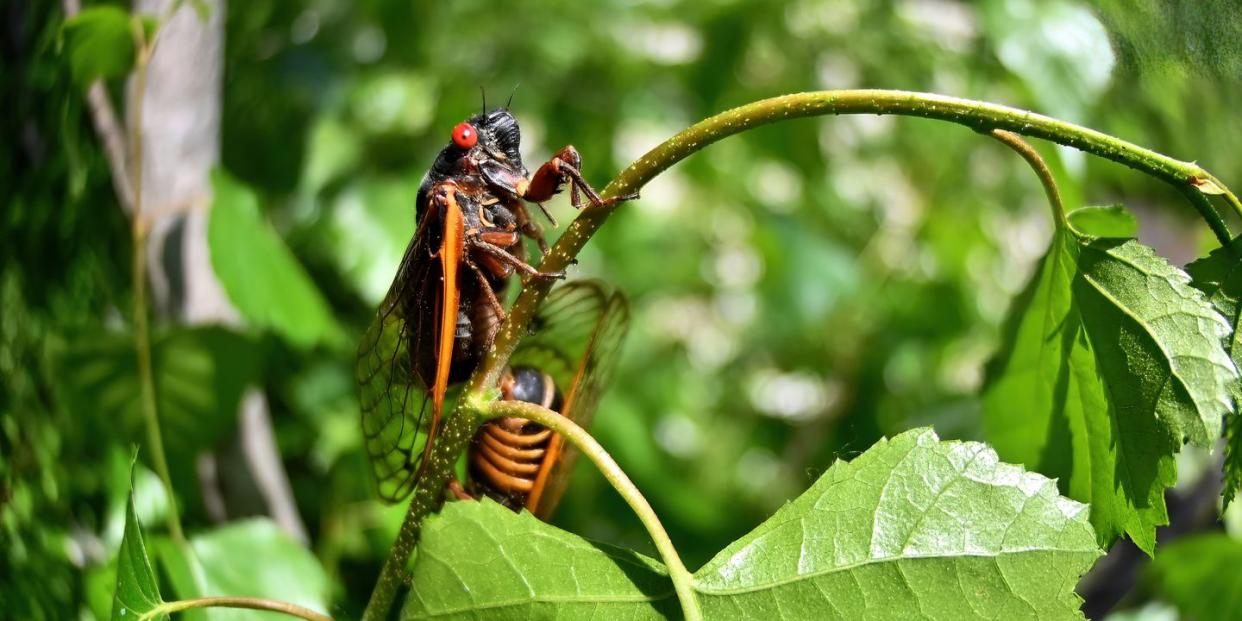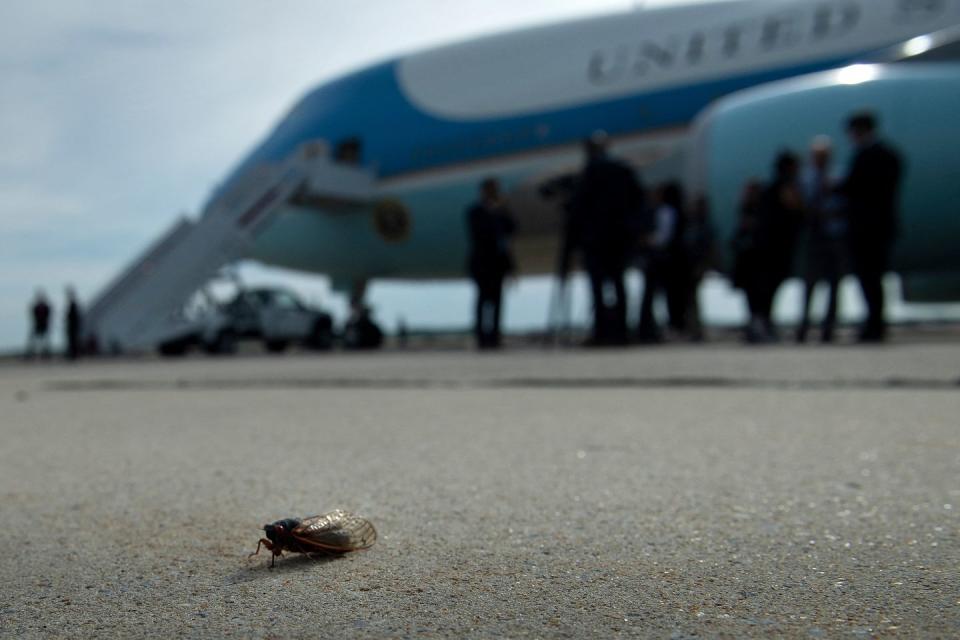Police Confirm a Cicada Caused a Car Crash After Flying Into a Driver’s Face

A cicada caused a car crash in Cincinnati by flying into a driver’s face.
The Cincinnati Police Department reported the accident, stating “nothing good happens with cicadas.”
Thankfully, the driver only sustained minor injuries.
The time has come. Brood X cicadas have emerged in full force across the eastern U.S., making their presence particularly known in Washington D.C., Baltimore, Maryland, and Cincinnati, Ohio, per Mount St. Joseph University’s Cicada Safari mapping. And they’re already causing trouble.
Molting and leaving shells everywhere is one thing, emitting a constant ear-piercing shriek is another—but when a cicada causes a literal car crash, it graduates from being a nuisance to a safety issue.
Yep, you read that right. On Monday in Cincinnati, one of the red-eyed buggers flew into a driver’s face, causing them to swerve and crash into a utility pole. The Cincinnati Police Department tweeted about the accident, using the hashtag #nothinggoodhappenswithcicadas.
#Crash single car into a pole at 2600 Riverside Drive. Caused by a cicada that flew in through an open window striking the driver in the face. #nothinggoodhappenswithcicadas #cicadas2021 pic.twitter.com/0WWUM8y5Ye
— Cincinnati Police Department (@CincyPD) June 7, 2021
Thankfully, the driver sustained only minor injuries—bruising from the seatbelt and airbags, per People—but the car was damaged pretty badly with the right side of its hood nearly detached. Thankfully, the officers were kind enough not to cite the driver.
A story like this one isn’t unheard of during periodical emergences like Brood X, which arrived after 17 years underground to mate, lay eggs, and feast on trees, and will return in another 17.
In fact, the insects interrupted presidential operations this week, filling the engine of Joe Biden’s press plane that was set to follow him to Europe. The invasion prompted the need for a whole new plane and pilot, per the New York Times, which caused significant delays. According to The Washington Post, some cicada swarms in the D.C. area are dense enough to be picked up on weather radars.

If you’re wondering how much longer you’ll have to trudge through daily activities like these at the expense of Brood X, we’re sorry to inform you that the insects have another two to three weeks above ground, at least.
The first of the bunch were spotted in late May, and experts say they can live up to six weeks. “By the beginning of July, we can probably expect most of them to be gone,” Chad Gore, Ph.D., an entomologist and market technical director for Ehrlich Pest Control previously told Prevention.com.
Their bags will be packed just in time for the annual cicadas to take over, which will stick around through August and early September.
You Might Also Like

